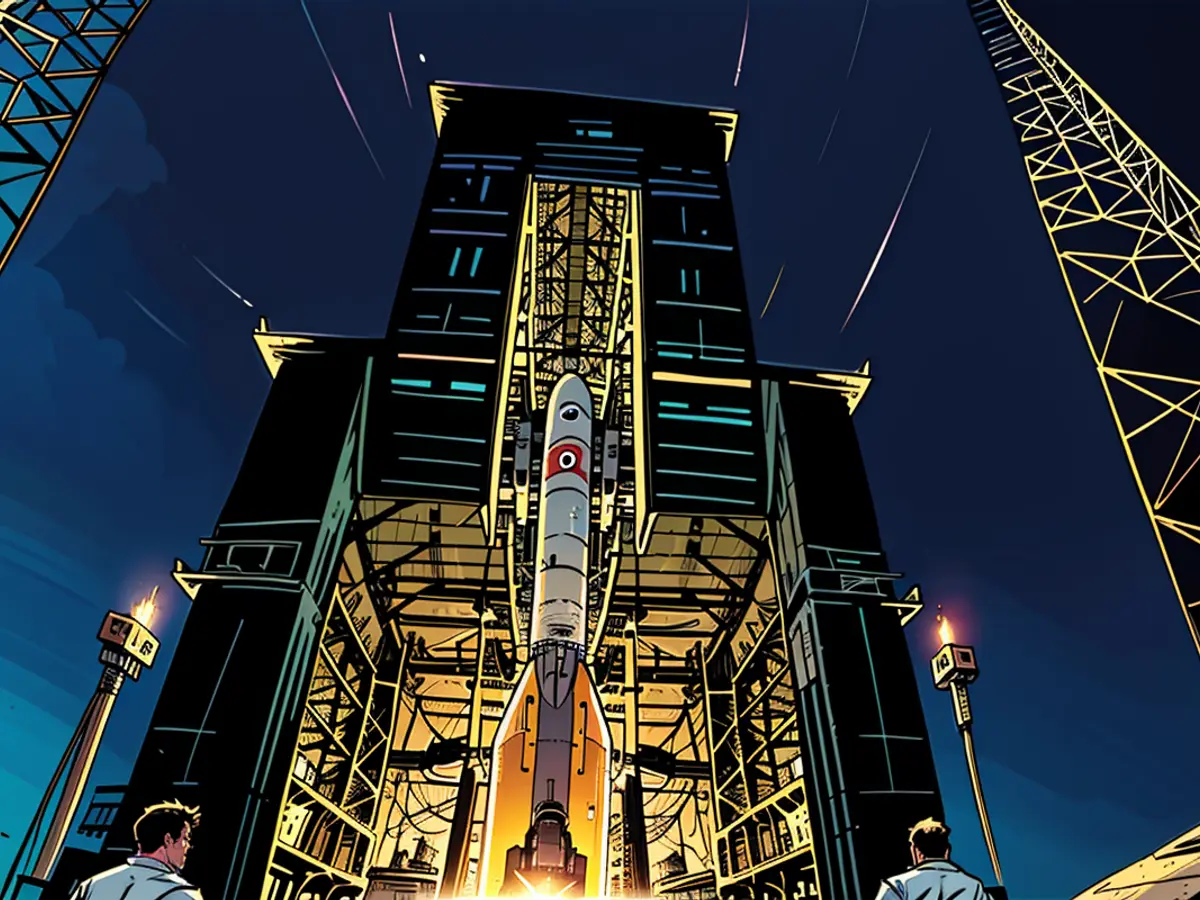Chronology - After a long wait: Ariane 6 to take off
After a decade, it's finally here: The reusable launcher Ariane 6 is expected to take off for the first time from the Kourou Spaceport in French Guiana. This marks the retirement of its predecessor Ariane 5, which has been in service since 1996 and can reach heights of up to 52 meters and carry nearly ten metric tons of payload into space. The new version is intended to be modular and robust.
2010: Green light for construction
Germany and France plan to build the Ariane 6 together, following the Ariane 5. The new launcher is expected to receive four engines, each with approximately 135 metric tons of solid fuel. However, the construction faces challenges. Germany, as one of the main financiers of the European Space Agency (ESA), initially wants to focus on further developing the Ariane 5.
2013: Shaping up
According to the European Space Agency's concept, the new launcher should have a reusable first stage and a new upper stage. However, the construction is facing delays. Germany wants to prioritize the further development of the Ariane 5.
2015: Development contract awarded
The ESA awards the development contract for the Ariane 6 to Airbus Safran Launchers (ASL). The contract is worth 2.4 billion Euros, with an additional 1.7 billion Euros agreed upon in the following year. The goal is to transport satellites more affordably into space than with the Ariane 5.
2019: July 2020 launch targeted
Ariane 6 is expected to make its first launch according to Arianespace in July 2020.
2020: Delay due to high costs
The Corona pandemic causes delays and interruptions in production and test phases. At the same time, it incurs high costs. The launch of the rocket is postponed due to the pandemic to 2021, later to 2022.
2021: Additional funding for new Ariane-6 rocket
Germany and France provide additional funding. In November, the first upper stage of the Ariane 6 travels from Bremen to the Kourou Spaceport.
2022: Launch delayed until 2023
Following a successful hot-fire test of the complete upper stage in early October, the planned first launch of the Ariane 6 is pushed back to the end of 2023 or even 2024. New requirements from commercial customers and the need for additional tests extend the development schedule.
2023: Further delay in rocket launch
The last Ariane 5 launch takes place in early July. Since then, the ESA has lacked its own transporters to bring large satellites into space. Since the failure of the Vega C during its first commercial flight in December 2022, this rocket is also grounded for the time being.
2024: First components in French Guiana
The main and upper stages of the Ariane 6 arrive in Kourou in February. The first launch into space is scheduled for June 9.
History of the Ariane Rocket Information about the Ariane 6 Arianespace European carrier rocket Ariane 6
- Construction of the reusable launcher Ariane 6 commences at the Kourou Spaceport in French Guiana, marking the collapse of its predecessor Ariane 5's era.
- Initially planned to be constructed by Germany and France, the Ariane 6 will ultimately receive four carrier rocket engines, each equipped with approximately 135 metric tons of solid fuel.
- The intended modular and robust Ariane 6 will contribute significantly to the field of space science, facilitating space travel for various European nations.
- In Berlin, Germany, concerned about prioritizing the Ariane 5, eventually agrees to work on the Ariane 6 alongside France, playing a crucial role in the project's chronology.
- Despite facing challenges and delays, the European Space Agency (ESA) awards the development contract for the Ariane 6 to Airbus Safran Launchers (ASL) in 2015.
- The Kourou spaceport in French Guiana, a key component of the European space travel infrastructure, will serve as the launch site for the reusable first stage and new upper stage of the Ariane 6.
- Arianespace SA, a company responsible for overseeing the carrier rocket's launches, will be responsible for overseeing the first launch of the Ariane 6, which has been rescheduled to take place in 2024 due to additional tests and requirements from commercial customers.







